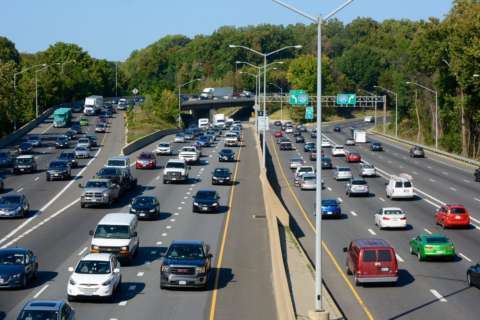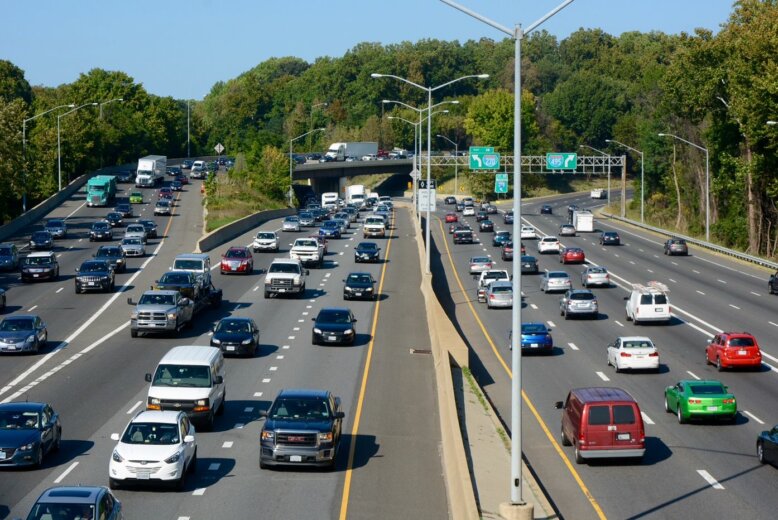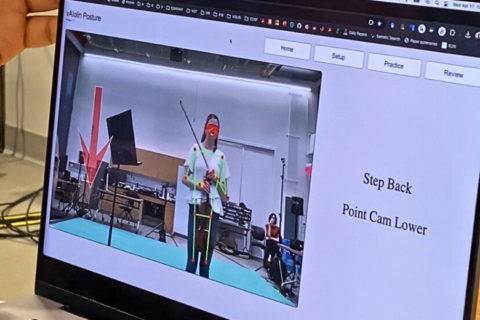This article was republished with permission from WTOP’s news partners at Maryland Matters. Sign up for Maryland Matters’ free email subscription today.

This content was republished with permission from WTOP’s news partners at Maryland Matters. Sign up for Maryland Matters’ free email subscription today.
Opponents of Maryland’s plan to add toll lanes to the Capital Beltway and Interstate 270 in Montgomery County urged the Federal Highway Administration on Wednesday to retract an analysis of the proposal that the state and the federal agency released earlier this month.
The “traffic model fails spectacularly,” foes of the express lane plan argued in a letter to FHA Administrator Stephanie Pollack, because it contradicts an analysis published in a previous review.
In particular, they point to an analysis of traffic speeds along the inner-loop of Interstate 495 near Old Georgetown Road, where — if Gov. Lawrence J. Hogan Jr.’s plan moves forward — two new toll lanes would merge into existing lanes.
The letter was signed by Ben Ross, head of the Maryland Transit Opportunities Coalition; Barbara Coufal, co-chair of Citizens Against Beltway Expansion; and Janet Gallant and Sally Stolz, the leaders of DontWiden270.org. All three groups have vigorously opposed Hogan’s plan since it was announced four years ago.
In 2019, critics noted, the Maryland Department of Transportation concluded that adding “express lanes” to the west of — but not east of — Old Georgetown Road would “create a ‘New Bottleneck’ at the merge point.”
The letter to FHA includes MDOT’s own graphic to illustrate the point.
The bid to get the feds to scrap the analysis of the project cites other examples of what activists claim are “invalid” traffic modeling.
They noted that the state’s plan would “reduce evening rush-hour traffic volumes by up to 4% on the northbound Beltway south of U.S. 50 in Prince George’s County, nearly eliminating congestion there.” A similar reduction is also predicted for U.S. 50 toward Annapolis.
“There is surely something deeply wrong with a model that shows traffic jams vanishing in Prince George’s County when a highway is widened on the other side of Washington,” the group wrote.
“The traffic forecast for the College Park-Greenbelt area is especially dubious — 15.9% fewer cars on Kenilworth Avenue, 12.8% on Route 1, and 9.9% on the Baltimore-Washington Parkway,” they added.
“When a model exhibits such severe and pervasive errors, none of its output can be trusted. Such a model is not a credible basis for federal decision-making. It must be corrected.”
Many transportation advocates and business groups have praised Hogan for his willingness to put forward a plan to address some of the capital region’s traffic woes, which routinely rank as among the worst in the nation.
The state hopes to contract with Accelerate Maryland Partners (AMP), a consortium headed by Transurban and a second Australian firm, to finance and build the lanes. Transurban has an extensive network of “express lanes” in Northern Virginia, and the firm’s CEO has told investors that winning the Maryland contract is a top priority.
AMP would determine the tolls motorists would pay — and pick up maintenance costs on both the new and existing lanes — in exchange for being able to keep most of the revenue that comes in.
Existing lanes would remain available for use free of charge, but the concessionaire would take over a free lane on I-270.
Hogan and Transportation Secretary Greg Slater have said the lanes will be built at “no net cost” to the state, though critics — including many members of the General Assembly and state Treasurer Nancy K. Kopp (D) — scoff at that claim.
Backers of “dynamic” tolling say they work because tolls go up as needed to keep traffic flowing freely — and that motorists who never use them benefit, due to a drop in congestion in the “free” lanes.
Critics fret that peak-demand benefits skew toward those with the financial resources to buy their way out of traffic jams.
In response to the letter to Pollack, Terry Owens, an MDOT spokesperson, defended the data and methodology used to develop the traffic relief estimates. He went on to say that traffic on the Beltway and I-270 would be worse without the road-widening plan the administration is advancing.
Hogan originally proposed adding four lanes to all of the Beltway, all of I-270 and the federally-owned Baltimore-Washington Parkway. With his tenure in Annapolis set to end in 15 months due to term limits, the governor is on a tight timeline to get a construction contract to the Board of Public Works next year.
A losing bidder, Capital Express Mobility Partners, has filed suit in Montgomery County. The consortium protested MDOT’s selection of AMP, claiming the group’s lack of a construction company made its bid inferior to the one CEMP put forward.
Supporters of Hogan’s plan have praised him for his willingness to accept changes — and to shrink his original vision — in response to concerns from homeowners, environmental groups and elected officials in Montgomery County and elsewhere.
It is because of those changes that MDOT was forced to produce a Supplement Draft Environmental Impact Statement to replace the document the agency released last year.
“The traffic modeling is credible, but we welcome and will review any comments received on the Supplemental Draft Environmental Impact Statement,” Owens said in an email to Maryland Matters.








